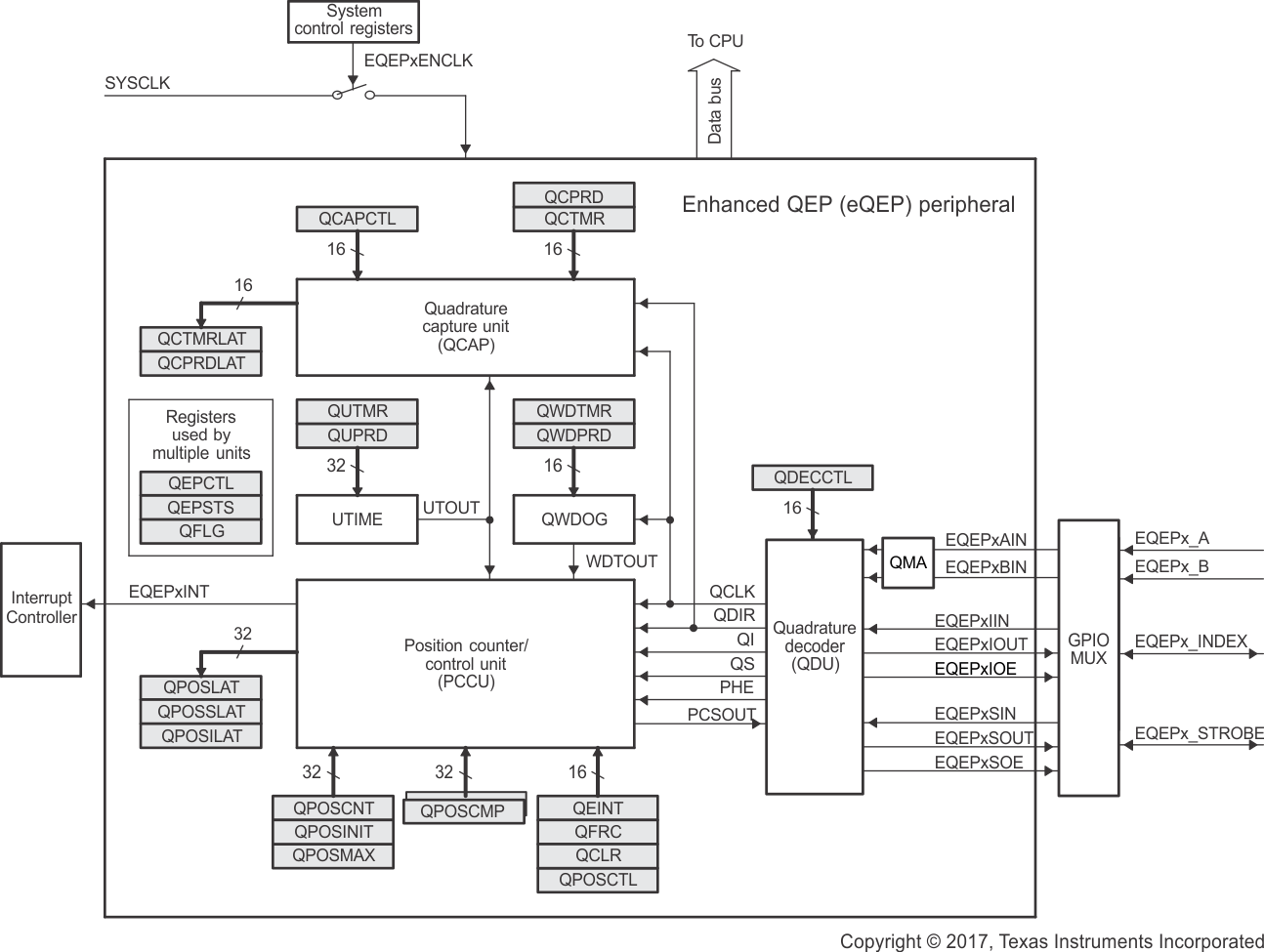SPRSP93 November 2024 F29H850TU , F29H859TU-Q1
ADVANCE INFORMATION
- 1
- 1 Features
- 2 Applications
- 3 Description
- 4 Device Comparison
- 5 Pin Configuration and Functions
-
6 Specifications
- 6.1 Absolute Maximum Ratings
- 6.2 F29H85x ESD Ratings – Commercial
- 6.3 F29H85x ESD Ratings – Automotive
- 6.4 F29P58x ESD Ratings – Commercial
- 6.5 F29P58x ESD Ratings – Automotive
- 6.6 Recommended Operating Conditions
- 6.7 Power Consumption Summary
- 6.8 Electrical Characteristics
- 6.9 Thermal Resistance Characteristics for ZEX Package
- 6.10 Thermal Resistance Characteristics for PTS Package
- 6.11 Thermal Resistance Characteristics for RFS Package
- 6.12 Thermal Resistance Characteristics for PZS Package
- 6.13 Thermal Design Considerations
- 6.14
System
- 6.14.1
Power Management Module (PMM)
- 6.14.1.1 Introduction
- 6.14.1.2 Overview
- 6.14.1.3 External Components
- 6.14.1.4 Power Sequencing
- 6.14.1.5 Power Management Module Electrical Data and Timing
- 6.14.2 Reset Timing
- 6.14.3
Clock Specifications
- 6.14.3.1 Clock Sources
- 6.14.3.2
Clock Frequencies, Requirements, and Characteristics
- 6.14.3.2.1
Input Clock Frequency and Timing
Requirements, PLL Lock Times
- 6.14.3.2.1.1 Input Clock Frequency
- 6.14.3.2.1.2 XTAL Oscillator Characteristics
- 6.14.3.2.1.3 X1 Input Level Characteristics When Using an External Clock Source Not a Crystal
- 6.14.3.2.1.4 X1 Timing Requirements
- 6.14.3.2.1.5 AUXCLKIN Timing Requirements
- 6.14.3.2.1.6 APLL Characteristics
- 6.14.3.2.1.7 XCLKOUT Switching Characteristics PLL Bypassed or Enabled
- 6.14.3.2.1
Input Clock Frequency and Timing
Requirements, PLL Lock Times
- 6.14.3.3 Input Clocks
- 6.14.3.4 XTAL Oscillator
- 6.14.3.5 Internal Oscillators
- 6.14.4 Flash Parameters
- 6.14.5 Memory Subsystem (MEMSS)
- 6.14.6 Debug/JTAG
- 6.14.7 GPIO Electrical Data and Timing
- 6.14.8 Real-Time Direct Memory Access (RTDMA)
- 6.14.9 Low-Power Modes
- 6.14.10
External Memory Interface (EMIF)
- 6.14.10.1 Asynchronous Memory Support
- 6.14.10.2 Synchronous DRAM Support
- 6.14.10.3
EMIF Electrical Data and Timing
- 6.14.10.3.1 EMIF Synchronous Memory Timing Requirements
- 6.14.10.3.2 EMIF Synchronous Memory Switching Characteristics
- 6.14.10.3.3 EMIF Synchronous Memory Timing Diagrams
- 6.14.10.3.4 EMIF Asynchronous Memory Timing Requirements
- 6.14.10.3.5 EMIF Asynchronous Memory Switching Characteristics
- 6.14.10.3.6 EMIF Asynchronous Memory Timing Diagrams
- 6.14.1
Power Management Module (PMM)
- 6.15
C29x Analog Peripherals
- 6.15.1 Analog Subsystem
- 6.15.2
Analog-to-Digital Converter (ADC)
- 6.15.2.1 ADC Configurability
- 6.15.2.2
ADC Electrical Data and Timing
- 6.15.2.2.1 ADC Operating Conditions 12-bit Single-Ended
- 6.15.2.2.2 ADC Operating Conditions 12-bit Differential
- 6.15.2.2.3 ADC Operating Conditions 16-bit Single-Ended
- 6.15.2.2.4 ADC Operating Conditions 16-bit Differential
- 6.15.2.2.5 ADC Timing Requirements
- 6.15.2.2.6 ADC Characteristics 12-bit Single-Ended
- 6.15.2.2.7 ADC Characteristics 12-bit Differential
- 6.15.2.2.8 ADC Characteristics 16-bit Single-Ended
- 6.15.2.2.9 ADC Characteristics 16-bit Differential
- 6.15.2.2.10 ADC INL and DNL
- 6.15.2.2.11 ADC Input Model Models
- 6.15.2.2.12 ADC Timing Diagrams
- 6.15.3 Temperature Sensor
- 6.15.4 Comparator Subsystem (CMPSS)
- 6.15.5 Buffered Digital-to-Analog Converter (DAC)
- 6.16
C29x Control Peripherals
- 6.16.1 Enhanced Capture (eCAP)
- 6.16.2 High-Resolution Capture (HRCAP)
- 6.16.3 Enhanced Pulse Width Modulator (ePWM)
- 6.16.4 External ADC Start-of-Conversion Electrical Data and Timing
- 6.16.5 High-Resolution Pulse Width Modulator (HRPWM)
- 6.16.6 Enhanced Quadrature Encoder Pulse (eQEP)
- 6.16.7 Sigma-Delta Filter Module (SDFM)
- 6.17
C29x Communications Peripherals
- 6.17.1 Modular Controller Area Network (MCAN)
- 6.17.2 Fast Serial Interface (FSI)
- 6.17.3 Inter-Integrated Circuit (I2C)
- 6.17.4 Power Management Bus (PMBus) Interface
- 6.17.5 Serial Peripheral Interface (SPI)
- 6.17.6 Single Edge Nibble Transmission (SENT)
- 6.17.7 Local Interconnect Network (LIN)
- 6.17.8 EtherCAT SubordinateDevice Controller (ESC)
- 6.17.9 Universal Asynchronous Receiver-Transmitter (UART)
-
7 Detailed Description
- 7.1 Overview
- 7.2 Functional Block Diagram
- 7.3 Error Signaling Module (ESM_C29)
- 7.4 Error Aggregator
- 7.5
Memory
- 7.5.1 C29x Memory Map
- 7.5.2
Flash Memory Map
- 7.5.2.1 Flash MAIN Region Address Map (F29H85x, 4MB)
- 7.5.2.2 Flash MAIN Region Address Map (F29H85x, 2MB)
- 7.5.2.3 Flash MAIN Region Address Map (F29P58x, 4MB)
- 7.5.2.4 Flash MAIN Region Address Map (F29P58x, 2MB)
- 7.5.2.5 Flash MAIN Region Address MAP (F29P58x, 1MB)
- 7.5.2.6 Flash Data Bank Address Map
- 7.5.2.7 Flash BANKMGMT Region Address Map
- 7.5.2.8 Flash SECCFG Region Address Map
- 7.5.3 Peripheral Registers Memory Map
- 7.6 Identification
- 7.7 Boot ROM
- 7.8 Security Modules and Cryptographic Accelerators
- 7.9
C29x Subsystem
- 7.9.1 C29 CPU Architecture
- 7.9.2 Peripheral Interrupt Priority and Expansion (PIPE)
- 7.9.3 Data Logging and Trace (DLT)
- 7.9.4 Waveform Analyzer Diagnostics (WADI)
- 7.9.5 Embedded Real-Time Analysis and Diagnostic (ERAD)
- 7.9.6 Inter-Processor Communications (IPC)
- 7.9.7 Watchdog
- 7.9.8 Dual-Clock Comparator (DCC)
- 7.9.9 Configurable Logic Block (CLB)
- 7.10 Lockstep Compare Module (LCM)
- 8 Applications, Implementation, and Layout
- 9 Device and Documentation Support
- 10Revision History
- 11Mechanical, Packaging, and Orderable Information
パッケージ・オプション
デバイスごとのパッケージ図は、PDF版データシートをご参照ください。
メカニカル・データ(パッケージ|ピン)
- PZS|100
- PTS|176
- RFS|144
- ZEX|256
サーマルパッド・メカニカル・データ
発注情報
6.16.6 Enhanced Quadrature Encoder Pulse (eQEP)
The eQEP module on this device is Type-2. The eQEP interfaces directly with linear or rotary incremental encoders to obtain position, direction, and speed information from rotating machines used in high-performance motion and position control systems.
The eQEP peripheral contains the following major functional units (see Figure 6-62):
- Programmable input qualification for each pin (part of the GPIO MUX)
- Quadrature decoder unit (QDU)
- Position counter and control unit for position measurement (PCCU)
- Quadrature edge-capture unit for low-speed measurement (QCAP)
- Unit time base for speed/frequency measurement (UTIME)
- Watchdog timer for detecting stalls (QWDOG)
- Quadrature Mode Adapter (QMA)
 Figure 6-62 eQEP
Block Diagram
Figure 6-62 eQEP
Block Diagram